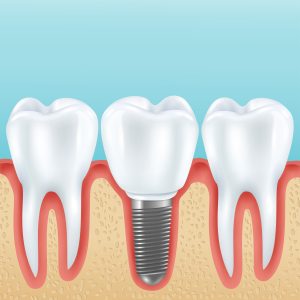One of the most prevalent dental issues among kids is tooth decay. If left untreated, this leads to cavities in children and eventually reaches the tooth’s inner pulp to cause further damage. Hence, detecting early cavity signs and symptoms is crucial to safeguard your child’s oral health.
If you notice any change in your child’s eating habits or a sudden pain in their gums or teeth, visit a dentist for children as soon as possible, as this can be due to cavities. If you are wondering how to identify if your child has a cavity, this article will help you understand it. Let us have a look.
Table of Contents
What is Tooth Decay?
Tooth decay refers to the breakdown or destruction of tooth enamel or the hard outer covering on the tooth surface. Destruction of this outer covering causes the formation of holes or cavities in children. These cavities get bigger with time if left untreated. It can even reach deep within the tooth pulp, affect the nerve endings, and result in pain and sensitivity.
What Causes Cavities in Kids?
A lot of factors can cause tooth decay and, eventually formation of cavities in your children. This includes:
1. Poor Oral Hygiene
Improper brushing is one of the main culprits of tooth decay and cavities in children. Surprisingly, many children do not even know how to brush their teeth properly. In addition, they may not have the required coordination or precision to target every single tooth.
Hence, it is recommend that parents monitor their children’s brushing habits or help them brush their teeth until they are 6 years old. You can even let a pediatric dentist teach your child the correct technique to get rid of decay at an early age.
2. Diet High in Sugar
One of the major risk factors is diet. Children love sugar, and it is uncommon for them not to crave ice cream, candy, and other sugary foods and drinks. The bacteria present in the mouth feed on this sugar to produce a sticky substance called plaque. The accumulation of plaque and bacteria contributes to tooth decay, poor oral health, and, eventually cavities.
3. No Fluoride
According to the Centers for Disease Control and Prevention (CDC), children who live in areas with fluoridated tap water have fewer cavities than those with no fluoride content in the water supply. In addition, children who brush with fluoridated toothpaste are at a lower risk of developing cavities as compared to those who do not.
What are the Common Signs of Cavities in Children?
Small children or toddlers can’t communicate their pain and discomfort. Moreover, tooth decay does not cause pain until it reaches the inner pulp of the tooth and results in severe damage. Hence, early detection of cavities is essential to keep your child’s oral health in check.
The common signs and symptoms you should watch out for include:
- Pits or holes in the teeth.
- White spots on the teeth.
- Dark spots on the teeth.
- Lethargy.
- Sudden mood swings or fussiness.
- Avoiding to eat.
- Holding the face or jaw frequently.
- Sensitive teeth in response to hot or cold drinks..
- Tooth pain.
- Swelling around the mouth area.
As a parent, you’re familiar with your child’s behavior and can tell when something is wrong. If you notice that your child is acting differently and you suspect a toothache, schedule an appointment with your dentist as soon as possible. Detecting cavities early can help in preventing tooth decay from getting worse.
What are the Treatment Options for Cavities in Children?
If your child has a cavity, your dentist may recommend several treatment options, including:
1. Dental Fillings
Dental filling is one of the common treatment options for cavities in children. It is usually perform when your child has one or more cavities. A dental filling is made up of composite resin, which restores your child’s smile. During the procedure, the dentist first removes the decay from the tooth and fills the cavity with dental filling. This stops the decay and prevents it from becoming worse.
2. Pulpotomy
A pulpotomy is require when the decay reaches the tooth’s inner pulp. It is similar to a root canal, during which a tiny portion of the inner pulp is remove. Following this, a medicated packing material is place inside the tooth and covered with a dental filling.
3. Tooth Extraction
Tooth extraction is restricted only to severe cases of cavities in children. The procedure is done when other treatment options are not viable to save the tooth.
4. Other Preventative Treatments
Other preventative treatment options, including fluoride varnishes or sealants, are preferred when your child is on the verge of developing a cavity. A sealant is used to protect the chewing surface of the back of the teeth by creating a protective covering. On the other hand, a fluoride varnish is applied to strengthen and prevent tooth decay.
Takeaway
Cavities in children are common. Hence, it is important to recognize the early signs of tooth decay and cavities. Consult your dentist immediately to avoid further consequences. In addition, make sure that your children follow a dental hygiene routine and consume less sugar to prevent tooth damage.
Get Your Child’s Dental Health Checked at Anoka Dental!
Whether your child has a cavity or not, a comprehensive dental checkup can help. Our pediatric dentists at Anoka Dental can detect early signs of cavities and prevent your child’s oral health from deteriorating.
Schedule an appointment with us today!
You can also call us at (763) 421-4002.
Visit us at 12 Bridge Sq # 106, Anoka, MN 55303.




